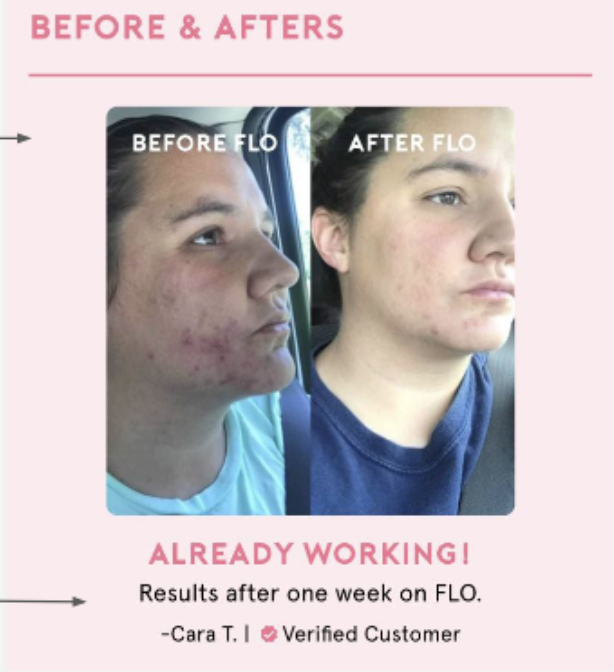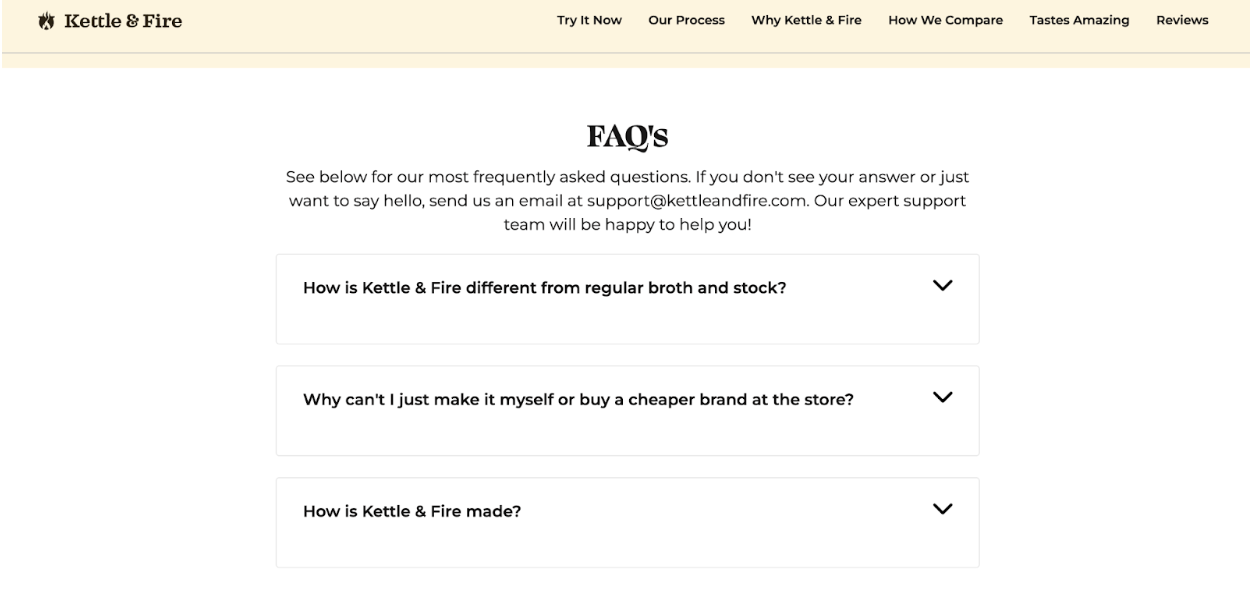The DNA of a High-Converting Landing Page
Crafting a high-converting landing page requires more than just design finesse – it demands an understanding of what makes your prospects tick. Interview your customers or send surveys, scour your reviews and those of your competitors to get a strong understanding of what makes your customers buy. Position your offer in a way that sets you apart from the competition. How can you build value that makes this an offer they would be crazy not to accept.
Let’s break down the elements we have seen most likely to drive high conversion, once you have the customer proposition nailed.
1.Hero Section
Bold Headline with a Compelling Angle and Complementary Subheading:
Craft a headline that grabs attention and communicates the essence of your offer in a concise and impactful manner.
Complement it with a subheading that adds more context or emphasizes a unique selling point.
Sticky CTA Reinforcing the Offer and Savings:
Develop a Call-to-Action (CTA) that stays visible as users scroll, reminding them of the offer and potential savings.
Use persuasive language in the CTA, emphasizing urgency or exclusivity to encourage immediate action.
Product Showcase Image:
Choose a high-quality image that visually represents the product on offer. Ensure the image aligns with the messaging and reinforces the value proposition.
Consider using lifestyle images that showcase the product in real-world scenarios to help potential customers envision its benefits.
Reviews for Instant Social Proof:
Highlight the impressive number of reviews to build trust and social proof. For example, "Join over 12,300+ satisfied customers who are satisfied with our product!"
Consider featuring snippets from a few glowing reviews to provide a quick overview of the positive experiences others have had.
Clear CTA, Potentially Including the Offer (e.g., "Free Mason Jar"):
Craft a straightforward and compelling CTA that clearly instructs visitors on the next steps.
If applicable, integrate the offer directly into the CTA to reinforce the value proposition and incentivize immediate action.
2. Comparison Chart
Showcasing What Differentiates Your Brand from the Competition:
Feature Set: Outline the unique features of your product or service that set it apart from competitors. This could include advanced technology, exclusive functionalities, or innovative solutions that address specific customer needs.
Performance Metrics: Use data or statistics to demonstrate superior performance, efficiency, or reliability compared to competitors. This could be presented in a visually appealing way, such as graphs or charts.
3. Social Proof - video/image-
Customer Pictures with Product to Build Trust and Relatability:
Authentic Imagery: Incorporate genuine customer pictures showcasing your product in real-life situations. This helps build trust by providing visual evidence of satisfied customers using and enjoying the product.
Diversity: Feature a diverse range of customer images to appeal to a broader audience. This inclusivity demonstrates that your product resonates with people from various backgrounds and lifestyles.
Utilize Videos to Tell a Better Story and Create Emotional Connection:
Product Demonstrations: Create videos that showcase the product in action. Highlight its features, benefits, and how it solves real-life problems. This helps potential customers visualize themselves using the product.
Customer Stories: Share video testimonials or success stories from actual customers. These narratives can evoke emotions, build credibility, and provide social proof. Include snippets of customers sharing their experiences and the positive impact your product has had on their lives.
CGC (Customer Generated Content): Integrate CGC videos from social media or email campaigns. This content, generated by actual customers, adds an extra layer of authenticity and relatability. Ensure the videos align with your brand's message and values.
Adding Customer Social Handles for Trustworthiness:
Transparency: Include the social media handles or usernames of customers in the videos and images. This adds transparency and authenticity, allowing potential customers to verify the content and connect directly with those who have shared their experiences.
User-Generated Content: Encourage customers to share their experiences on social media, and feature the best content on your landing page. This not only builds trust but also turns customers into brand advocates.
4. Before and after
Transformations leverage the potent psychology of relatability and emotional resonance. By presenting a vivid contrast between the initial state ("before") and the remarkable improvement or change ("after"), your products purpose becomes clear.
This taps into universal human experience, fostering a sense of connection as individuals recognize their own struggles or desires mirrored in the before image.
5. Reviews and Credibility Builders
Credibility Badges for Social Proof:
Best Seller Badge: Showcase a "Best Seller" badge prominently on your landing page. This badge serves as a powerful credibility marker, signaling to visitors that your product is popular and well-received by others. People often buy to align themselves with what's trending and socially relevant.
Influencer Endorsements: Feature influencer testimonials or collaborations. Influencers can enhance credibility, as their endorsement reinforces the desirability and quality of your product.
Clickable Reviews for Deeper Insight:
Abundant Reviews: Display a substantial number of reviews directly on the landing page. Make these reviews clickable, allowing visitors to access a dedicated reviews section with a more extensive collection of customer feedback. This transparency builds trust and provides a comprehensive view of the product's reputation.
Aggregate Ratings: Summarize overall ratings prominently, offering a quick snapshot of customer satisfaction. This simplifies the decision-making process for potential buyers.
Extra Information for Decision Support:
Payment Options: Highlight flexible payment options like "Buy Now Pay Later" to cater to varied financial preferences. This information can alleviate concerns and make the purchase more accessible.
Shipping Offers: Clearly communicate any free shipping promotions or expedited delivery options. This extra value encourages conversion by addressing potential hesitations related to additional costs.
Addressing Key Purchasing Objections:
Return Policy: Clearly outline a hassle-free return policy, mitigating fears of buyer's remorse. Knowing they can return the product if unsatisfied often boosts customer confidence.
Customer Support: Emphasize accessible customer support channels. Addressing potential concerns proactively assures customers that help is readily available should they encounter any issues.
6. Endorsements
Leverage the authority of press quotes to amplify social proof on your landing page. Integrate impactful snippets from reputable publications that highlight your product's excellence or industry significance. These endorsements serve as third-party validations, instilling trust and credibility among potential customers.
Featuring recognizable media outlets not only showcases your product's recognition but also positions your brand as a trusted industry leader.
6. Why You Section
Add core value props and USP's of your brand.
(The ones that set you apart from your competition)
Add icons to make the information clear and easy to digest.
7. How To Use Section
Add images or animations to make things visual and to simplify the directions
Highlight all the ways you can use the product- there might be more than one.
8. Founder/story
Purchases aren't just transactions; they're connections formed with people and stories. Customers are drawn to the narratives behind products and the personalities behind businesses. Authenticity and relatability foster emotional bonds.
People buy not just products but the experiences, values, and stories. Successful brands understand this, leveraging storytelling to create a shared journey with their audience.
9. FAQs Section
Incorporating FAQs on a website landing page is crucial as it proactively addresses potential customer queries, instilling confidence and trust. It streamlines the user experience, providing quick access to relevant information and overcoming uncertainties that may hinder conversions.
FAQs serve as a preemptive customer support tool, offering clarity on product details, shipping policies, and other common concerns. By anticipating and answering questions, businesses showcase transparency and attentiveness, enhancing user satisfaction.
This not only streamlines the decision-making process for visitors but also contributes to a positive perception of the brand, ultimately fostering a higher likelihood of successful conversions and customer retention.
10. Footer Section
Add social links: Including social links on your website fosters connectivity, allowing visitors to engage with your brand across various platforms. This enhances brand visibility, builds community, and facilitates easy sharing of content, ultimately expanding your online presence. Social links create a seamless bridge between your website and the broader digital landscape, maximizing reach and engagement.
Add legal bits, (T&Cs, privacy policy etc): Incorporating legal elements like Terms & Conditions and Privacy Policy on your website is essential for transparency and compliance. It protects both users and your business, outlining rights and responsibilities. Clear legal documentation fosters trust, mitigates risks, and ensures a secure online environment, promoting a credible and accountable online presence.
Add the country where the website location is selected
Add help options
Add corporate information
11. Copy and positioning
Crafting a high-converting landing page requires more than just design finesse – it demands an understanding of what makes your prospects tick.
Interview your customers or send surveys, scour your reviews and those of your competitors to get a strong understanding of what makes your customers buy.
Position your offer in a way that sets you apart from the competition. How can you build value that makes this an offer they would be crazy not to accept.
Persuasive and benefits-driven product descriptions that address customer pain points.
Use of persuasive, psychology-driven language to highlight unique selling points and benefits.
Clearly communicate what sets your product apart from competitors.
Highlight any unique features, discounts, or offers prominently.
Scannable Content: Use of bullet points, subheadings, and short paragraphs to make the content easily scannable.
Highlight key features and benefits using bullet points or icons.
Your Landing Page Checklist
Limited Distractions:
Minimal navigation links that keep visitors focused on the main CTA.
Avoid excessive pop-ups or unnecessary elements that can distract from the primary goal.
Easy Checkout Process:
If the goal is to sell, ensure a streamlined and intuitive checkout process.
Display trust signals like secure payment icons and money-back guarantees.
Urgency and Scarcity:
Create a sense of urgency with limited-time offers or countdown timers.
Mention limited stock availability to encourage quicker action.
Loading Speed:
Optimize images and code for fast loading times to prevent user frustration.
Slow-loading pages can lead to higher bounce rates.
Clarity and Focus:
Clear and concise headline that immediately communicates the value proposition. Make sure it passes the 3 second test - do you know exactly what is being sold and what hte benefit is within 3 seconds?
One primary call-to-action (CTA) that stands out prominently - you can repeat the CTA button as you move down the page.
Engaging Visuals:
High-quality product images or videos that showcase the product from different angles.
Include close up images, lifestyle images, or graphical elements that help the user understand what is in the picture
Consistent branding elements like colors, fonts, and logo to create a cohesive look.
Mobile-Friendly Design:
Responsive design that ensures the landing page looks and functions well on mobile devices.
Easy-to-tap buttons and navigation elements for touch screens.
Don’t forget, our team are here to help accelerate your eCommerce business with Facebook, Google, TikTok and Pinterest ads and Klaviyo email marketing.
Let’s chat about your business and goals - email us on hello@webtopia.co












